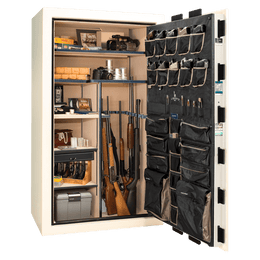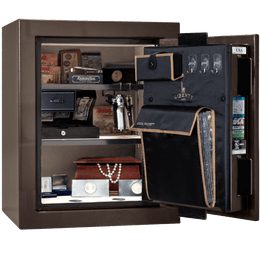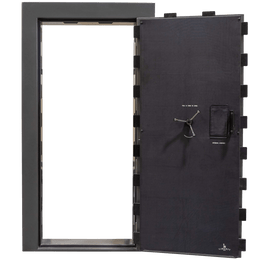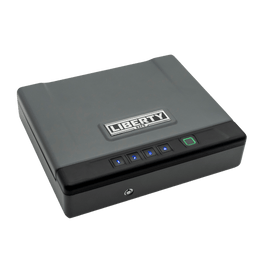A Proactive Approach to Home Security Starts with Your Vault
Your vault door is more than just an entryway to a secure room; it's the primary barrier protecting your most valuable assets from theft, fire, and unforeseen events. While installing a high-quality vault door is a critical first step, its long-term reliability depends on regular inspection and maintenance. A periodic check-up ensures every component functions as intended, providing the peace of mind that your family, firearms, and valuables are truly secure. This security checklist provides a clear, step-by-step guide to keep your vault in prime condition, making your secure space truly lockdown-ready.
Think of it like any other essential piece of equipment: regular maintenance prevents small issues from becoming major vulnerabilities. By taking a few moments to run through this checklist, you reinforce your home's security and uphold the integrity of your safe room.
The Ultimate Vault Door Security Checklist
Follow these steps to conduct a thorough inspection of your vault door and its critical components. A complete check ensures every aspect of your vault door security is functioning at its best.
1. The Locking Mechanism: Your First Line of Defense
The lock is the heart of your vault's security. Whether you have a mechanical or electronic lock, ensuring its proper function is paramount.
- Electronic Locks: Test your keypad for responsiveness. If the lock beeps or shows a low battery indicator, replace the battery immediately. It’s wise to use high-quality, brand-name batteries for longevity. If you need guidance, you can find tutorials on tasks like changing the battery on a SecuRam BackLit lock or programming biometric systems.
- Mechanical Locks: Turn the dial and listen for smooth, consistent clicks. It should not feel loose, gritty, or difficult to turn. If you notice any resistance, it might be time for servicing by a certified locksmith.
- Locking Bolts: With the door open, extend and retract the locking bolts using the handle. They should move smoothly without catching. Check the channels they retract into for any debris that could obstruct their movement.
2. Door Seals: The Unseen Protector
Seals play a crucial dual role: they protect against smoke and water, but more importantly, many are intumescent, meaning they expand during a fire to block intense heat. This is a key component of fire protection you can trust.
- Visual Inspection: Carefully examine the seal around the entire perimeter of the door frame. Look for any signs of cracking, peeling, or brittleness. A compromised seal can fail during a fire.
- Adhesion Check: Gently press on the seal to ensure it's still firmly attached to the frame. If any part of it is loose, it needs to be repaired or replaced.
3. Hinges and Alignment: Ensuring a Solid Fit
Proper door alignment is critical for both security and smooth operation. A misaligned door can prevent the locking bolts from fully engaging, creating a significant vulnerability.
- Swing and Movement: Open and close the door slowly. It should swing freely without grinding or catching. Any unexpected noises could indicate a hinge issue.
- Check for Gaps: When the door is closed and locked, check the gap between the door and the frame. It should be uniform all the way around. An uneven gap could mean the door is sagging or out of alignment.
4. Anchoring: The Foundation of Security
A vault door is only as strong as its installation. If the frame can be pried away from the wall, the door's strength is irrelevant. Ensuring your safe is properly installed is a critical step, which is why understanding the process of getting your new safe in your home correctly is so vital.
- Check the Anchors: Verify that all anchor bolts are tight and secure. Attempt to shift the frame; there should be absolutely no movement.
- Inspect Surrounding Wall: Look for any cracks or signs of stress in the concrete or wood around the vault frame. This could indicate an installation issue that needs to be addressed.
Beyond the Checklist: Your Annual Security Review
Beyond this physical checklist, take time once a year to review your overall security plan. Is your inventory of valuables up to date? Are your emergency preparedness kits stocked? Is your ammunition stored safely and organized in a dedicated ammo cabinet? A holistic approach to security ensures that you're prepared for any situation.
At Liberty Safe, we believe that true security is an ongoing commitment. Our safes and vault doors, like the popular Colonial Series, are built with American-made quality to provide a lifetime of protection. Performing these simple checks helps guarantee your investment continues to protect what you value most for years to come. For more detailed information, always refer to your product's use and care guide.
Ready to Secure Your Peace of Mind?
Whether you have questions about your current vault door or are considering a new installation, our team of experts is here to help. Trust the brand that over two million Americans rely on for their home security.
Contact Us TodayFrequently Asked Questions
How often should I perform this security check on my vault door?
We recommend performing a full inspection at least once a year. However, a quick check of the lock and handle operation every few months is a good practice, especially if the vault is used frequently.
What should I do if my electronic lock stops working?
The first step is always to replace the battery with a new, high-quality alkaline battery. If that does not resolve the issue, consult your user manual or contact customer support for troubleshooting. Avoid trying to force the lock open.
Can I upgrade the lock on my existing vault door?
In many cases, yes. It's often possible to switch from a mechanical lock to an electronic one, or upgrade to a newer electronic model (like a biometric lock). This work should always be performed by a certified safe technician to ensure it's done correctly and doesn't void your warranty.
Why is an intumescent fire seal so important?
An intumescent seal is critical for fire protection. When exposed to high temperatures, it expands to many times its original size, sealing the gap between the door and the frame. This action prevents flames, intense heat, and smoke from entering the vault and damaging your valuables.
Glossary of Security Terms
Intumescent Seal:
A material used in vault and safe door seals that swells and chars when exposed to heat, forming a fire-resistant barrier.
Relocker:
A secondary, internal locking device designed to trigger if the main lock is tampered with or attacked, securing the bolts in place.
Hard Plate:
A dense plate of hardened steel, often containing ball bearings, placed in front of a safe's lock to protect it from being drilled or punched.







